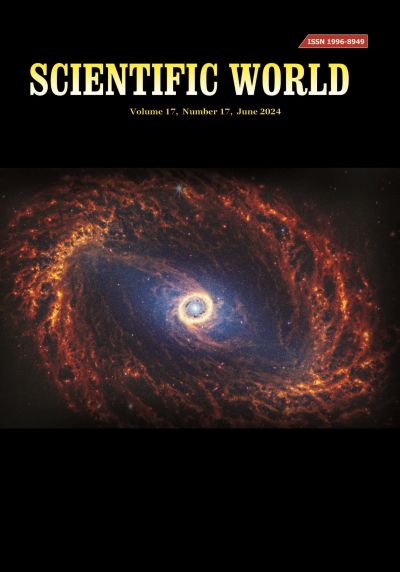Phytochemical evaluation of Aglaomorpha coronans from Nepal
DOI:
https://doi.org/10.3126/sw.v17i17.66440Keywords:
Antibacterial, Antioxidant, GC-MS, PhytochemicalsAbstract
The rhizomes of Aglaomorpha coronans is used to cure back pain by the local people of Lamjung district. The medicinal value depends on the presence of biologically active phytochemicals with drug like properties. Phytochemical evaluation of A. coronans of Nepalese origin has not been reported yet. Hence, the present study is focused on the phytochemical analysis, evaluation of antioxidant, antibacterial activities of various extracts and GC-MS profiling of ethyl acetate extract. The rhizomes were extracted with the hexane, chloroform, ethylacetate, methanol and 50% aqueous methanol. Phytochemical screening of ethyl acetate, methanol and 50% aqueous methanol extracts showed the presence of phenolics, flavonoids, tannins and sugar. Their total content as well as antioxidant activity were determined. The highest amounts of phenolics, flavonoids and tannins were detected in the ethyl acetate extract (292.144±1.829 mg GAE/g, 322.904±3.942 mg CE/g, 516.666±0.423 mg TAE/g). The highest amounts of sugars were detected in the methanol extract (205.649±0.169mg GE/g). In DPPH radical scavenging assay, ethyl acetate extract showed the highest activity (IC50 37.545 μg/ml). The chloroform, ethyl acetate and methanol extracts showed antibacterial activity against S. aureus. GC-MS analysis of ethyl acetate extract showed the presence of more than 20 compounds. However, 9 compounds, mainly polyol, low molecular weight phenolic acids and terpenes/sterols were identified by comparing the mass fragmentation pattern of each compound with the standard NIST mass spectral database. The presence of 3,4-dihydroxy benzoic acid, Olean-13(18)-ene and β-sitosterol justifies the anti-inflammatory and analgesic properties of A. coronans in traditional medicine.




